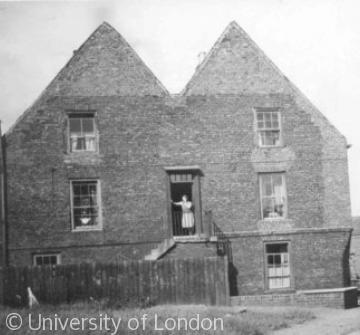Poverty and charity

Almshouses were built to cater for the "respectable poor" from early in the 1700s. For the desperate, there was the workhouse.
While most people had to fend for themselves, paupers who were too young, old or sick were taken into the parish workhouse. Sunderland’s first, built by public subscription in c. 1740 at the edge of the town moor near Holy Trinity church, extended by a new wing in 1779, at its peak housed more than 600 people. It was larger by far than the poorhouses of Monkwearmouth and Bishopwearmouth. A visitor in 1795 noted 176 residents, of whom 36 were children under 12, two thirds of them illegitimate. These were set to work in a pin factory, the boys in due course sent to sea. The remainder were ‘chiefly old women and prostitutes’, and a few old men who were employed as scavengers in the streets, or in picking oakum. An epidemic of fever ‘prevails now in the house, and has done so for some time back’. The parish also at that time supported 279 poor families in their own homes, and the dependents of 43 militia and 225 impressed men.
Content generated during research for two paperback books 'Sunderland and its Origins: Monks to Mariners' (ISBN 13 : 9781860774799) and 'Sunderland: Building a City' (ISBN 13 : 978-1-86077-547-5 ) for the England's Past for Everyone series










